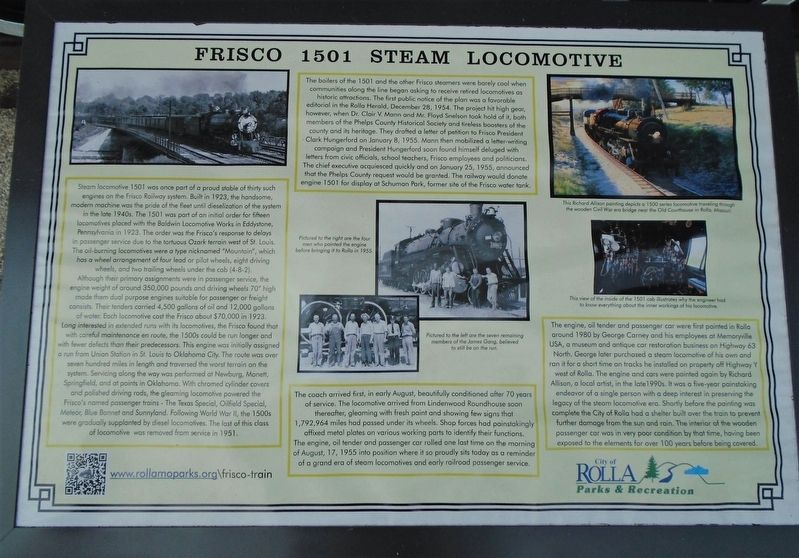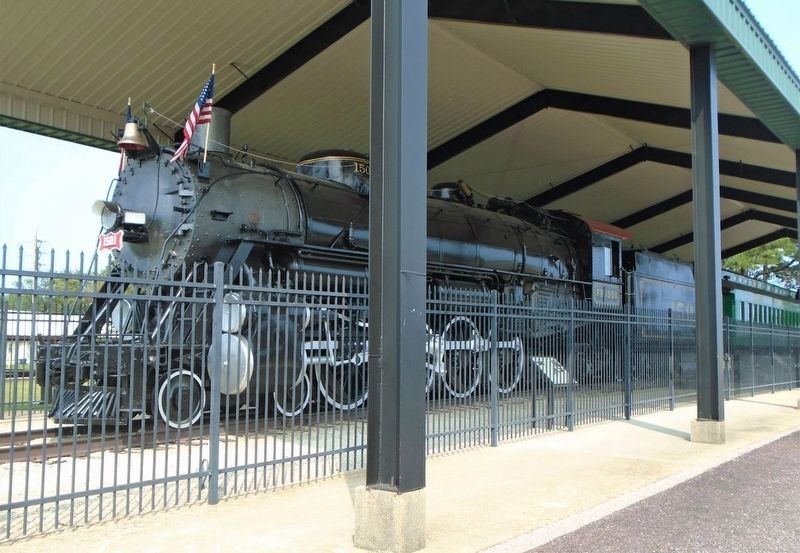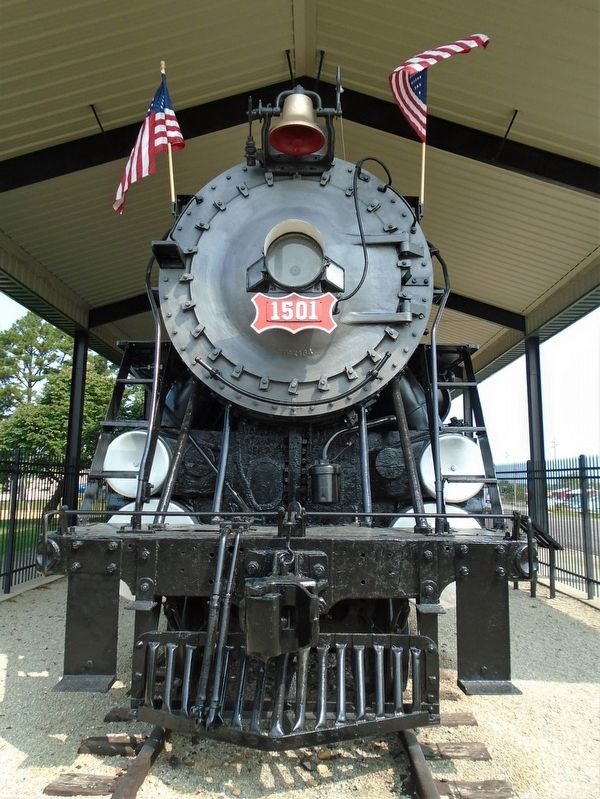Frisco 1501 Steam Locomotive
Steam locomotive 1501 was once part of a proud stable of thirty such engines on the Frisco Railway system. Built in 1923, the handsome modern machine was the pride of the fleet until dieselization of the system in the late 1940s. The 1501 was part of an initial order for fifteen locomotives placed with the Baldwin Locomotive Works in Eddystone, Pennsylvania in 1923. The order was the Frisco's response to delays in passenger service due to the tortuous Ozark territory west of St. Louis. The oil-buring locomotives were a type nicknamed "Mountain", which has a wheel arrangement of four lead or pilot wheels, eight driving wheels, and two trailing wheels under the cab (4-8-2).
Although their primary assignments were in passenger service, the engine weight of around 350,000 pounds and driving wheels 70" high made them dual purpose engines suitable for passenger and freight consists. Their tenders carried 4,500 gallons of oil and 12,000 gallons of water. Each locomotive cost the Frisco about $70,000 in 1923. Long interested in extended runs with its locomotives, the Frisco found that with careful maintenance en route, the 1500s could be run longer and with fewer defects than their predecessors.
This engine was initially assigned a run from Union Station in St. Louis to Oklahoma City. The route was over seven hundred miles in length
and traversed the worst terrain on the system. Servicing along the way was performed at Newburg, Monett, Springfield, and at points in Oklahoma. With chromed cylinder covers and polished driving rods, the gleaming locomotive powered the Frisco's named passenger trains - The Texas Special, Oilfield Special, Meteor, Blue Bonnet and Sunnyland. Following World War II, the 1500s were gradually supplanted by diesel locomotives. The last of this class of locomotive was removed from service in 1951.The boilers of the 1501 and the other Frisco steamers were barely cool when communities along the line began asking to receive retired locomotives as historic attractions. The first public notice of the plan was a favorable editorial in the Rolla Herald, December 28, 1954. The project hit high gear, however, when Dr. Clair V. Mann and Mr. Floyd Snelson took hold of it, both members of the Phelps County Historical Society and tireless boosters of the county and its heritage. They drafted a letter of petition to Frisco President Clark Hungerford on January 8, 1955. Mann then mobilized a letter-writing campaign and President Hungerford soon found himself deluged with letters from civic officials, school teachers, Frisco employees and politicians. The chief executive acquiesced quickly and on January 25, 1955, announced that the Phelps County request would be granted. The railway would donate
engine 1501 for display at Schuman Park, former site of the Frisco water tank.The coach arrived first, in early August, beautifully conditioned after 70 years of service. The locomotive arrived from Lindenwood Roundhouse soon thereafter, gleaming with fresh paint and showing few signs that 1,792,964 miles had passed under its wheels. Shop forces had painstakingly affixed metal plates to various working parts to identify their functions. The engine, oil tender and passenger car rolled one last time on the morning of August, 17, 1955 into position where it so proudly sits today as a reminder of a grand era of steam locomotives and early railroad passenger service.
The engine, oil tender and passenger car were first painted in Rolla around 1980 by George Carney and his employees at Memoryville USA, a museum and antique car restoration business on Highway 63 North. George later purchased a steam locomotive of his own and ran it for a short time on tracks he installed on property off Highway Y west of Rolla. The engine and cars were painted again by Richard Allison, a local artist, in the late 1990s. It was a five-year painstaking endeavor of a single person with a deep interest in preserving the legacy of the steam locomotive era. Shortly before the painting was complete the City of Rolla had a shelter built over the train to prevent further damage from the sun and rain. The
interior of the wooden passenger car was in very poor condition by that time, having been exposed to the elements for over 100 years before being covered.
[Photo captions, clockwise from top left, read]
• [No caption]
• This Richard Allison painting depicts a 1500 series locomotive traveling through the wooden Civil War era bridge near the Old Courthouse in Rolla, Missouri.
• This view of the inside of the 1501 cab illustrates why the engineer had to know everything about the inner workings of his locomotive.
• Pictured to the right are the four men who painted the engine before bringing it to Rolla in 1955.
• Pictured to the left are the seven remaining members of the James Gang, believed to still be on the run.
Erected 2020 by City of Rolla Parks & Recreation.
Topics. This historical marker is listed in these topic lists: Industry & Commerce • Parks & Recreational Areas • Railroads & Streetcars. A significant historical year for this entry is 1923.
Location. 37° 57.365′ N, 91° 45.959′ W. Marker is in Rolla, Missouri, in Phelps County. Marker is on Bardsley Road south of Arkansas Avenue, on the right when traveling south. Locomotive and marker are in Schuman Park. Touch for map. Marker is at or near this postal address: 103 East 14th Street, Rolla MO 65401, United States of America. Touch for directions.
Other nearby markers. At least 8 other markers are within walking
More about this marker. Frisco Lake is the centerpiece of Schuman Park and was probably created by the Frisco Railroad as a dependable water source for refilling its steam locomotive tenders during stops in Rolla.
Also see . . .
1. Frisco Engine 1501, Oil Tender & 1880s Passenger Car. (Submitted on October 3, 2020, by William Fischer, Jr. of Scranton, Pennsylvania.)
2. About the Frisco Railroad. (Submitted on October 3, 2020, by William Fischer, Jr. of Scranton, Pennsylvania.)
Credits. This page was last revised on October 3, 2020. It was originally submitted on October 3, 2020, by William Fischer, Jr. of Scranton, Pennsylvania. This page has been viewed 587 times since then and 78 times this year. Photos: 1, 2, 3. submitted on October 3, 2020, by William Fischer, Jr. of Scranton, Pennsylvania.


